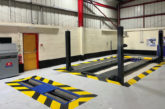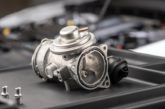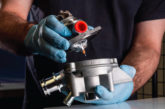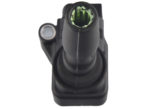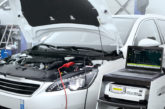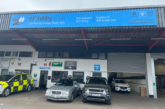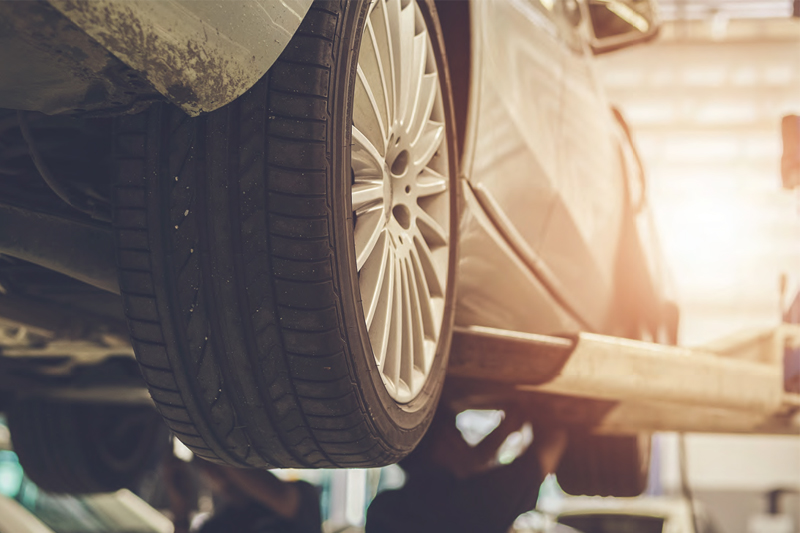
From cyber security to connected equipment, gone are the days of fit-and-forget solutions for MOT test stations. Here, the Garage Equipment Association’s chief executive Julian Woods updates PMM readers on recent changes and what they need to prepare for coming down the line.
Have you reviewed your business cyber security policy recently? With most modern software-driven equipment, you need to ensure you are keeping your equipment up-to-date with bug fixes and new feature, this could be as simple as ensuring your Windows or other operating systems are enabled to auto update, this will help prevent any viruses or malicious software getting installed onto your devices. We strongly encourage that all equipment that is connected to the internet to have some form of antivirus or malicious software blocker installed.
So how often are you backing up your MOT testing data in case of an unforeseen problem occurring? We all depend on various digital equipment and assume all to be fine, until that one day when you have a problem and look to recover or restore your data. You may recall in recent years the DVSA relaxing the requirement on providing MOT customers with a printout of the test results from various test equipment, predominantly the emissions testing equipment, this was on the proviso that your testing equipment stored the emission test results and that the test results could be retrieved if or when required. Do you know how and where to find this information?
Over and above the basics of keeping your PCs and tablets etc. safe and secure, is your MOT testing equipment up-to-date with the latest requirements? In recent years there has been no major update requirements for your MOT testing equipment from the DVSA, but there have been a few minor amendments, if you’re not sure, check with your equipment supplier/maintainer to ensure you’re using the latest version of software.
Connected equipment
In 2019, the DVSA started to roll out connected MOT testing equipment, first it was roller brake testers, followed by decelerometers and then emission equipment, this requirement is only mandatory for new sites or change of ownership, but all MOT sites can opt to go connected. Yes, we know the naysayers oppose this move and conspiracy theorists say this is just a stealth way for the DVSA to keep an eye on what you’re doing. Well, we can report this is certainly not the case, connected equipment has been implemented to assist MOT stations by automatically passing the test results to the MTS terminal, saving the tester time and removing any potential for human error occurring in transposing the results to MTS. A large percentage of current MOT testing equipment can be simply updated to MOT connected status, just contact your equipment supplier for more information on connecting your test equipment and help yourself improve your MOT tester’s workload by getting connected.
Another area of change within your MOT bay, related to your testing equipment is calibration and maintenance. There have been a few changes here in relation to DVSA requirements. Firstly decelerometers (all types) now need to have a calibration performed every 12 months opposed to the previous requirement of 24 months. Self-calibration by the VTS of Roller brake testers, plate brake testers and headlight aim equipment was stopped in April 2023, all VTSs now require the calibration to be performed by either:
- the original equipment manufacturer
- a company which has taken over responsibility for equipment support from the manufacturer
- a calibration specialist, VTSs employing calibration specialists must satisfy themselves of the technical competence and viability of the company concerned and be able to demonstrate this to DVSA upon request.
Using a GEA accredited calibration engineer will ensure you meet these requirements, use our website to search for members who can provide accredited MOT engineers.
I will finish up with some general guidance on your MOT equipment, referring to the MOT testing guide as published on the .Gov website, this clearly identifies what MOT equipment needs to be calibrated and maintained to meet DVSA requirements for testing; if you have not checked this section recently it’s worth a read through as this applies to all MOT sites, not just new ones. It not only covers what equipment requires calibration and maintenance but advice on intervals of calibration, retention of records (calibration certificates) etc.
The one area which is not listed in the above requirements is your MOT ramp/lift. This comes under the health and safety at work regulations (HSE LOLER & PUWER), which imposed a duty of care to have all lifting equipment in vehicle workshops maintained in accordance with the manufacturer’s guidelines (PUWER). LOLER requires all lifting equipment to be examined and certified by an independent, competent person, normally every six months. Further information on this subject can be found on the GEA website.
For the .Gov MOT testing guide click here.
For the HSE regulations click here.


